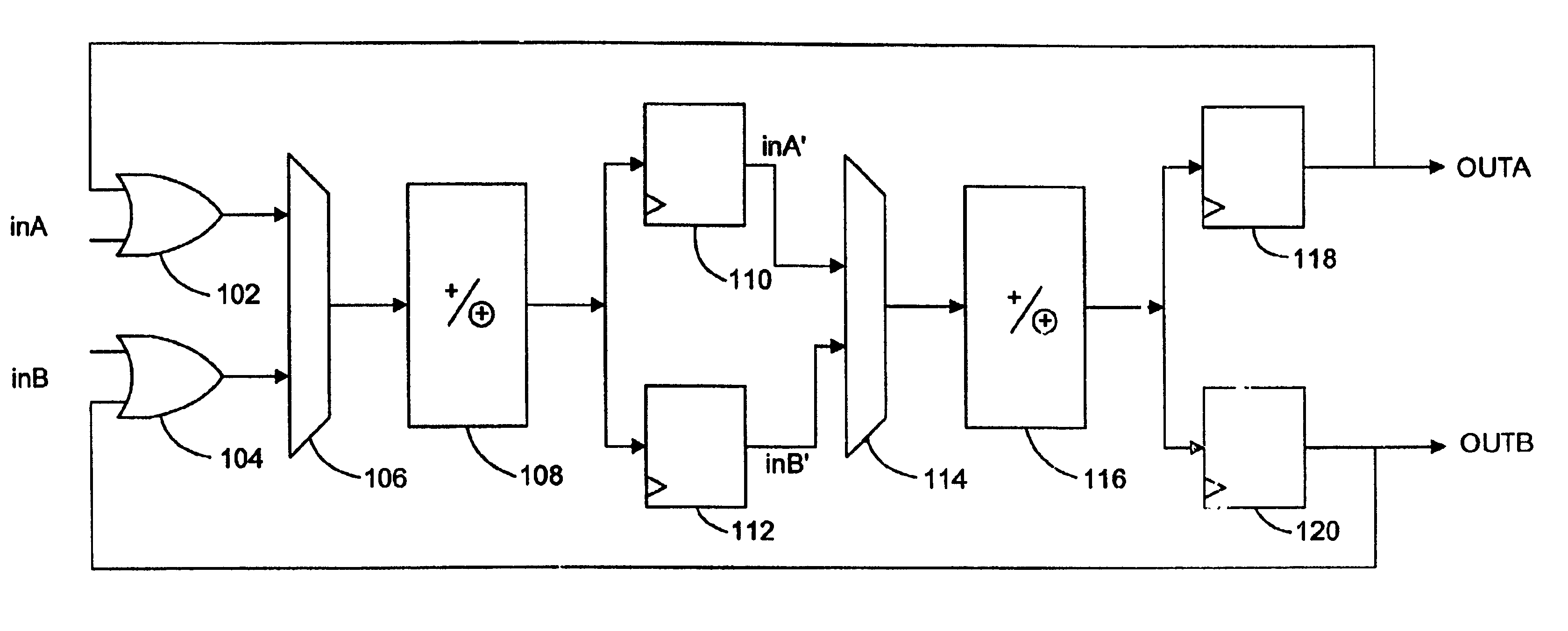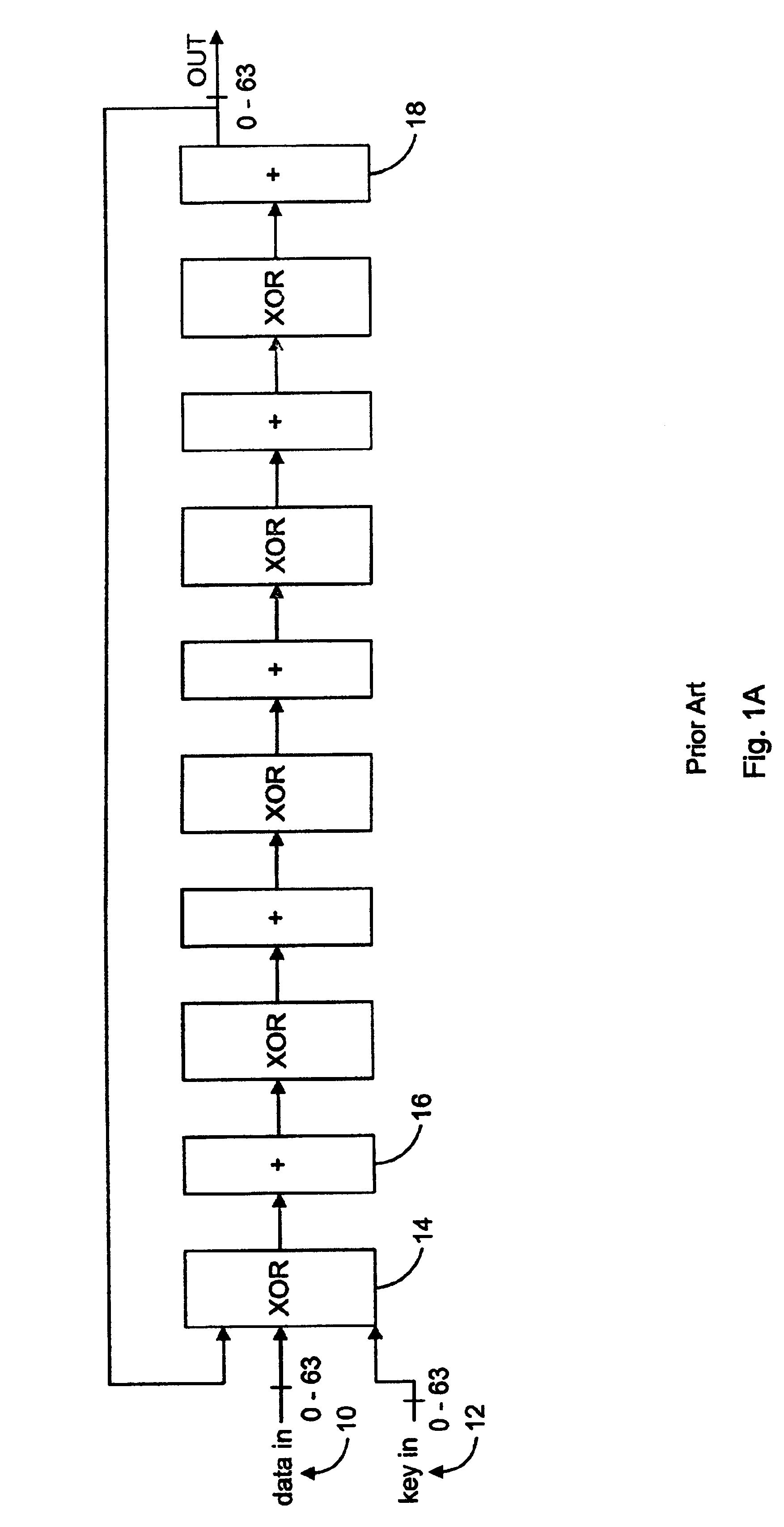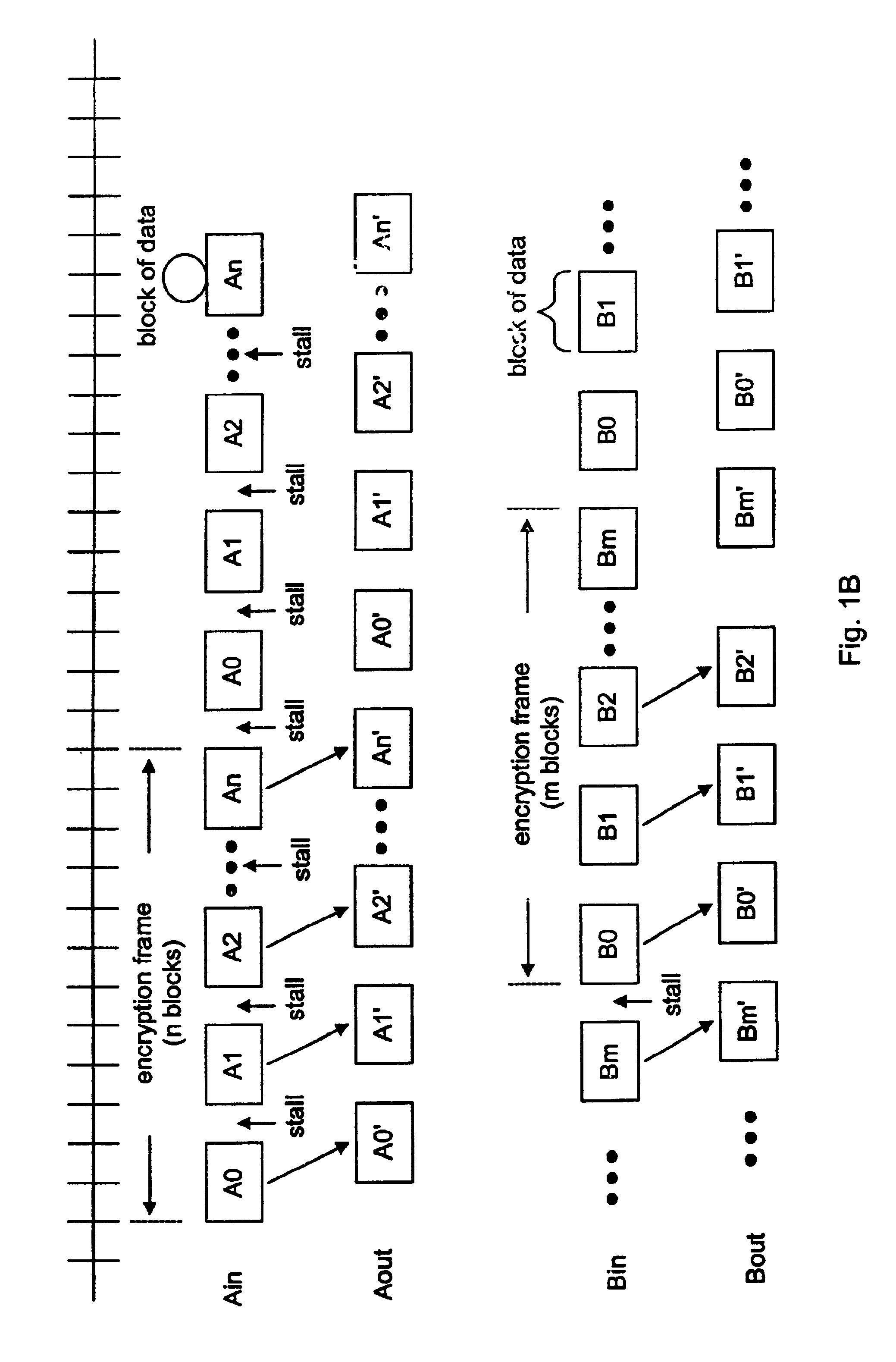Encryption/decryption engine for multiple isochronous data streams
a data stream and encryption technology, applied in the field of encryption/decryption devices, can solve the problems of difficult circuit design that can meet all the requirements of digital video, inability to interleave the processing of encryption frames, and inability to interleave encryption frames
- Summary
- Abstract
- Description
- Claims
- Application Information
AI Technical Summary
Benefits of technology
Problems solved by technology
Method used
Image
Examples
Embodiment Construction
FIG. 2A shows a block diagram of the generalized concept of the present invention.
In FIG. 2A, a multiple-stage digital processor is shown with the stages arranged in a circular manner. Stages 108 and 116 represent any type of digital processing stage. As will be apparent, any number of stages can be represented by stages 108 and 116.
Input is received at the left of the diagram at either of inputs inA and inB feeding XOR gates 102 and 104. The inputs are fed into multiplexer 106, which selectively applies one of the inputs to processing stage 108.
The output of processing stage 108 is selectively fed to one of two registers, or buffers, 110 and 112. Register 110 serves to store, and output, a value corresponding to inA which is referred to as inA′ while register 112 receives, stores, and outputs inB′.
Both outputs from registers 110 and 112 are fed to multiplexer 114. Multiplexer 114 selectively applies either inA′ or inB′ to processing stage 116. The output from processing stage 116 i...
PUM
 Login to View More
Login to View More Abstract
Description
Claims
Application Information
 Login to View More
Login to View More - R&D
- Intellectual Property
- Life Sciences
- Materials
- Tech Scout
- Unparalleled Data Quality
- Higher Quality Content
- 60% Fewer Hallucinations
Browse by: Latest US Patents, China's latest patents, Technical Efficacy Thesaurus, Application Domain, Technology Topic, Popular Technical Reports.
© 2025 PatSnap. All rights reserved.Legal|Privacy policy|Modern Slavery Act Transparency Statement|Sitemap|About US| Contact US: help@patsnap.com



